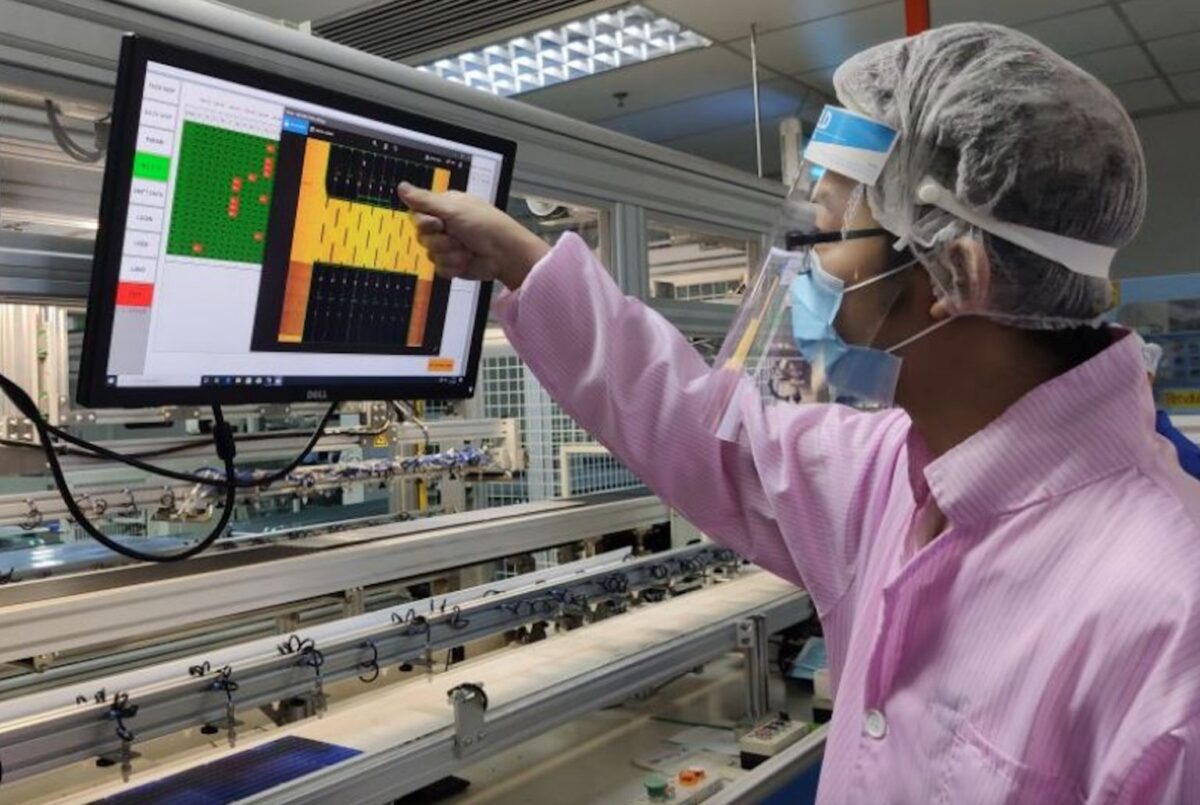TOPCon technology has gained a strong foothold in the PV market and is projected to account for more than 75% of n-type capacity by 2023, according to Edurne Zoco of S&P Global Commodity Insights.
Chinese manufacturers have made significant investments in this cell technology, and investors, independent power producers (IPPs), and funds are already becoming familiar with its potential. One contributing factor to TOPCon's success story is its price, which has decreased to just around €0.01 ($0.01)/W more than PERC's over the past two years.
TOPCon outperforms PERC in various “tangible” indicators, including bifaciality coefficient, efficiency, temperature coefficients, and annual degradation. Consequently, financial models based on TOPCon show a more attractive return on investment compared to PERC. Asier Ukar, director of the Spanish headquarters of PI Berlin, says this often serves as the primary driver for choosing TOPCon technology.
However, Ukar notes the importance of not solely relying on data from datasheets but also conducting a thorough and transparent analysis of the technology's long-term behavior, specifically in relation to degradation mechanisms. According to Ukar, it is crucial to identify and address potential risks associated with TOPCon technology early on.
One particular risk identified by PI Berlin is related to the presence of aluminum at the cell-to-cell contacts, which are located at the front of the cell where moisture accumulates. Damp-heat testing and subsequent electroluminescence testing can detect this issue. TOPCon cells are more sensitive to water vapor, so it is recommended to use polyolefin elastomer (POE) on the front side for glass-glass modules, while POE on both sides is preferred for glass-backsheet modules.
Another risk arises from the pressure to reduce the amount of silver in TOPCon cells' busbars, leading to thinner busbars and a less robust grip on the cell. This can result in mechanical damage to the printing and finger interruptions or breaks, leading to decreased performance due to increased effective series resistance. Electroluminescence tests can detect these issues.
TOPCon technology also faces degradation challenges similar to those of PERC technology, such as polarization-induced degradation (PID-p). The front side of TOPCon cells, which has a structure similar to the back side of PERC, can be affected by this phenomenon.
Furthermore, the aluminum oxide passivation layers in TOPCon cells are prone to UV degradation. While PERC technology is not significantly affected due to the aluminum being on the back side, TOPCon is more susceptible because the aluminum oxide passivation layers are located on the light-exposed front side.
Ukar notes the need for adjustments in quality control during TOPCon fabrication, including sample size and specific tests in the laboratory, to address the risks inherent to TOPCon technology. Extended duration tests, such as Damp Heat, Thermal Cycling, or Humidity Freeze, are crucial for assessing the long-term reliability of modules beyond the standard data specified in the datasheet.
Within the bill of materials (BOM) for TOPCon modules, the encapsulant is a key component. An inadequate or low-quality encapsulant can nullify the benefits of TOPCon compared to PERC. The 2023 scorecard by PVEL, which includes the PID192h test, demonstrates substantial variations in extended durability results among different BOMs, even within the same manufacturer.
Ukar notes that some manufacturers relax the acceptance and rejection criteria for TOPCon compared to PERC to minimize yield loss and maintain productivity. However, it is crucial to identify and address these risks early on and with transparency from the industry to fully exploit the benefits of TOPCon.
Despite the associated risks, properly manufactured TOPCon modules outperform PERC and exhibit minimal degradation phenomena.
This content is protected by copyright and may not be reused. If you want to cooperate with us and would like to reuse some of our content, please contact: editors@pv-magazine.com.



2 comments
By submitting this form you agree to pv magazine using your data for the purposes of publishing your comment.
Your personal data will only be disclosed or otherwise transmitted to third parties for the purposes of spam filtering or if this is necessary for technical maintenance of the website. Any other transfer to third parties will not take place unless this is justified on the basis of applicable data protection regulations or if pv magazine is legally obliged to do so.
You may revoke this consent at any time with effect for the future, in which case your personal data will be deleted immediately. Otherwise, your data will be deleted if pv magazine has processed your request or the purpose of data storage is fulfilled.
Further information on data privacy can be found in our Data Protection Policy.